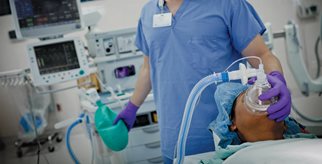Playing is Learning
The Different Categories of Anesthesia
October 11th, 2016
| Ads | ||
|
Play the Challenge
|
||
|
A New Word is Coined A new Character is revealed A new Game is Afoot |
An Edutainment Adventure Based on Three Rounds of Investigations
|
|
|
Welcome to the World of PROFESsee™by seeCOSM™ PROFESsee™ is my title. I am the perpetual learner, in pursuit of knowledge, wisdom and truth. I derived my name from professor |
 |
|
|
Blood is life; therefore, the heart pumps life to the other parts of the body. Performing cardiac surgery is like dangling the heart on a very thin cord – a lot can go wrong quite quickly and suddenly. How surgeons navigate these delicate waters still amazes me (can we have a round of applause for the surgeons?), despite the occasional failures and complications. Anesthetics (the drugs that put you between life and death) play an important role in helping surgeons do this. In a study by Landoni et al in 2009, they reported, that anesthesia and anesthetic protocols affect the postoperative mortality and occurrence of myocardial infarction, time on mechanical ventilation, postoperative cardiac troponin release, need for inotropic support and hospital stay. There are different stages of the cardiovascular surgery, and they all require different anesthesia. These include: Preoperative evaluation and premedication There are various reasons for the use of preoperative evaluation and premedication. These may include any of the following: reduce patient apprehension and jitters, provide intervention for pains before vascular cannulation, and to induce “twilight sleep”. These pharmacological interventions also help to prevent angina episodes – pain from the heart receiving too little blood – which might not be caught (They need a Jerry Rice or Tony Gonzalez perhaps) clinically. A popular choice for preoperative anesthesia is oral, intravenous or intramuscular benzodiazepines. Dosage and choice of an agent is, however, dependent on the patient’s history, age, and health status. Examples of preoperative agents include Diazepam (oral: 0.1-0.15 mg/kg) and Midazolam (Intravenous: 1-2 mg) for amnesia and anxiolysis, and Morphine (Intramuscular: 0.1 – 0.15 mg/kg and Fentanyl (intravenous: 50-75 µg both analgesics. Intra-operative anesthesia The purpose for intra-operative anesthesia is to make the intubating conditions favorable, minimize the risk of hypotension and myocardial depression, hypertension and tachycardia, hypertension and left ventricular (LV) hypertrophy. There are different approaches to minimize these risks, though. For example, hypotension can be managed by using little doses of vasopressors (drugs that cause the constriction of the muscles) and administering blockers for situations involving excessive flow. Examples of intra-operative anesthesia include Thiopental (intravenous: 3-7 mg/kg), Propofol (1.5-2.5 mg/kg intravenous), Etomidate (0.2-0.4 mg/kg intravenously), Midazolam (intravenous: 0.1-0.2 mg/kg, administered over 30-60 seconds) and many others. Postoperative anesthesia Postoperative anesthesia is used to minimize the effects of postoperative common adverse events like postoperative atrial fibrillation, postoperative bleeding and transfusion, neurocognitive dysfunction, acute kidney injury (AKI) and acute lung injury. Examples of postoperative anesthesia are Amiodarone, Digoxin, Statins, procainamide and methylprednisolone. Can you match the anesthesia methods? Image courtesy of: http://www.mrsmommymd.com/2013/02/reflecting-on-my-clerkship-experience.html |
||
Latest News / Events
E-mail [email protected]
The Professee™ Newsletter Beta
http://www.seecosm.com/
http://www.seecosm.com/

